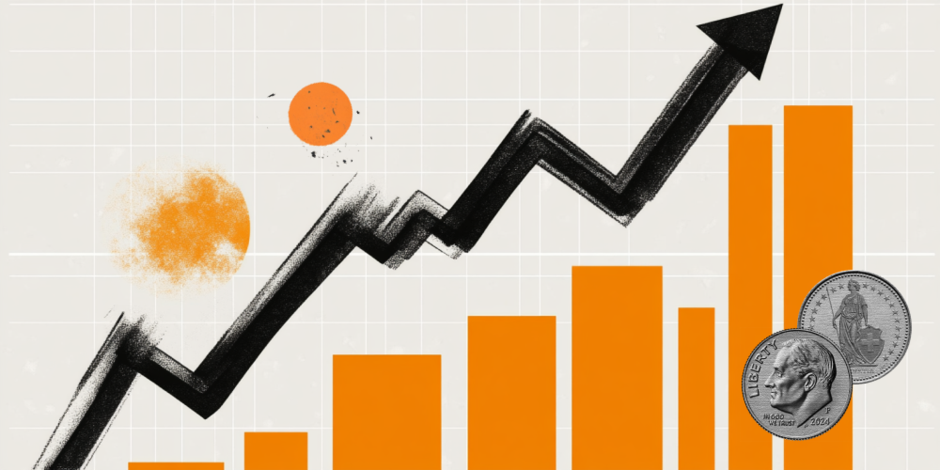Created
: 2025.10.21














![]() 2025.10.21 13:09
2025.10.21 13:09
The USD/CHF pair ticks up to near 0.7930 during the Asian trading session on Tuesday. The Swiss Franc pair edges higher as the US Dollar (USD) extends its two-day recovery move amid easing trade frictions between the United States (US) and China.
At the time of writing, the US Dollar Index (DXY), which tracks the Greenback's value against six major currencies, trades 0.12% higher to near 98.70.
Trade tensions between the US and China receded after comments from President Donald Trump on Monday signaled confidence that Washington will reach a deal with Beijing. Trump and Chinese leader Xi Jinping are scheduled to meet at the Asia-Pacific Economic Cooperation meeting in South Korea later this month. This will be the first meeting between both leaders since Trump's return to the White House.
On the domestic front, hopes of US government reopening after three weeks of shutdown have also supported the US Dollar. On Monday, White House economic adviser Kevin Hassett stated in an interview with CNBC that the shutdown is" likely to end sometime this week".
This week, investors will also focus on the delayed US Consumer Price Index (CPI) data for September, which will be released on Friday. The impact of the inflation data will be significant on the US Dollar as major federal economic data have not released since the government shutdown.
Meanwhile, the Swiss Franc (CHF) trades broadly calm despite increasing concerns over the Swiss economic outlook. Swiss State Secretariat for Economic Affairs (SECO) confirmed in its October outlook that the economy will expand by only 1.3% this year, a pace below the historical average. The institution also slashed the Gross Domestic Product (GDP) growth forecast for 2026 to 0.9% from 1.2% previously anticipated, highlighting a significant loss of momentum in the second half of 2025.
The US Dollar (USD) is the official currency of the United States of America, and the 'de facto' currency of a significant number of other countries where it is found in circulation alongside local notes. It is the most heavily traded currency in the world, accounting for over 88% of all global foreign exchange turnover, or an average of $6.6 trillion in transactions per day, according to data from 2022. Following the second world war, the USD took over from the British Pound as the world's reserve currency. For most of its history, the US Dollar was backed by Gold, until the Bretton Woods Agreement in 1971 when the Gold Standard went away.
The most important single factor impacting on the value of the US Dollar is monetary policy, which is shaped by the Federal Reserve (Fed). The Fed has two mandates: to achieve price stability (control inflation) and foster full employment. Its primary tool to achieve these two goals is by adjusting interest rates. When prices are rising too quickly and inflation is above the Fed's 2% target, the Fed will raise rates, which helps the USD value. When inflation falls below 2% or the Unemployment Rate is too high, the Fed may lower interest rates, which weighs on the Greenback.
In extreme situations, the Federal Reserve can also print more Dollars and enact quantitative easing (QE). QE is the process by which the Fed substantially increases the flow of credit in a stuck financial system. It is a non-standard policy measure used when credit has dried up because banks will not lend to each other (out of the fear of counterparty default). It is a last resort when simply lowering interest rates is unlikely to achieve the necessary result. It was the Fed's weapon of choice to combat the credit crunch that occurred during the Great Financial Crisis in 2008. It involves the Fed printing more Dollars and using them to buy US government bonds predominantly from financial institutions. QE usually leads to a weaker US Dollar.
Quantitative tightening (QT) is the reverse process whereby the Federal Reserve stops buying bonds from financial institutions and does not reinvest the principal from the bonds it holds maturing in new purchases. It is usually positive for the US Dollar.
![]()
Created
: 2025.10.21
![]()
Last updated
: 2025.10.21

FXStreet is a forex information website, delivering market analysis and news articles 24/7.
It features a number of articles contributed by well-known analysts, in addition to the ones by its editorial team.
Founded in 2000 by Francesc Riverola, a Spanish economist, it has grown to become a world-renowned information website.
We hope you find this article useful. Any comments or suggestions will be greatly appreciated.
We are also looking for writers with extensive experience in forex and crypto to join us.
please contact us at [email protected].
Disclaimer:
All information and content provided on this website is provided for informational purposes only and is not intended to solicit any investment. Although all efforts are made in order to ensure that the information is correct, no guarantee is provided for the accuracy of any content on this website. Any decision made shall be the responsibility of the investor and Myforex does not take any responsibility whatsoever regarding the use of any information provided herein.
The content provided on this website belongs to Myforex and, where stated, the relevant licensors. All rights are reserved by Myforex and the relevant licensors, and no content of this website, whether in full or in part, shall be copied or displayed elsewhere without the explicit written permission of the relevant copyright holder. If you wish to use any part of the content provided on this website, please ensure that you contact Myforex.
Myforex uses cookies to improve the convenience and functionality of this website. This website may include cookies not only by us but also by third parties (advertisers, log analysts, etc.) for the purpose of tracking the activities of users. Cookie policy